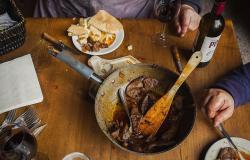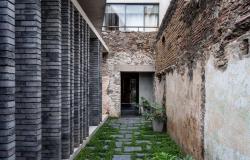06:51 PM
Margarita Serje She is a professor at the University of the Andes. In her academic work she has been interested in studying borders and peripheries, those places that are outside of cultural maps or on the very edge of the unknown. Your book The Upside Down of the Nation: Wild territories, borders and no man’s lands It is one of the basic texts of recent Colombian anthropology. Hence it was a matter of time before Serje became interested in The maelstromthe novel by José E. Rivera whose narrative action occurs precisely in the peripheries of Colombia.
In this field, his contribution to research on Rivera’s work took shape in The maelstrom. A cosmographic edition, on which he worked with Erna Von der Walde. Invited to the Treasure Book Fair, EL COLOMBIANO spoke with Serje about the issues of the jungle.
You may be interested in: “Poetry is the invention of a new language”: Pilar Gutiérrez
What is Colombia’s charm with the Amazon? What do we find there?
“The Amazon is a universe, it is an entire cosmos, within the cosmos. The Amazon is a world of great geological and biological diversity, and above all, great social diversity. Obviously, it is one of the most important lungs on the planet. Most of the planet’s biodiversity is concentrated there, which is in the tropical humid forests. Furthermore, there are a multitude of linguistic families and forms of settlement there. We have the wrong idea that indigenous people live in little houses in the middle of the jungle. In reality, there are super-complex cultures there, which have formed confederations on a regional scale. And we must not forget that if we took the map of the continental United States and superimposed it on the Amazon, it would fit. That is, the area of the Amazon basin is a little larger than the area of the continental United States.”
Despite all this, from that area we only receive news related to deforestation, illegal mining, violence…
“Unfortunately yes. Although Colombia is a jungle country, we have done everything possible to destroy it. As a society we have no major qualms about destroying the Amazon, polluting its rivers, and extinguishing the indigenous societies that live in the jungle. Now, the jungle is not a landscape that has survived like this since the Jurassic. The jungle is a social landscape produced by indigenous societies. We destroy that because we have an extractivist, short-term mentality. We destroy the jungle, especially because we do not understand it. They have put into our heads the idea that the jungle is a place of danger, it is a place of fever, of diseases. There is a famous phrase by the wise Caldas that recommends cutting down the jungle to be a healthy and happy country. We have been knocking it down for two hundred years, but we are not a healthy or happy country.”
Let’s talk about the experience of living in the jungle…
“Yes, I had the privilege of having lived in the jungle and one of the things I learned is that the jungle is a cultural landscape. The indigenous people who live in the jungle have a creative role. They are constantly taking care of the seedlings, transporting them from one place to another, they have a cultivation system that is not opposed to the jungle. A 50-year-old indigenous crop is now indistinguishable from what we call virgin forest. So, one of the strongest experiences I have had is walking through the jungle and someone says that there is grandpa’s farm. Over the years, these crops are indistinguishable from what we call the jungle.
So, one of the things that has impressed me most about sharing daily life in the jungle with indigenous peoples has been seeing the jungle as a domestic space. Not as an opposite, unhealthy, dangerous space, but quite the opposite. In the jungle there is much less pollution, the waters are pure. “It really is a super healthy place.”
You may be interested in: From García Márquez to self-help, these are the best-selling books in Colombia so far this year
On the occasion of the centenary of La vorágine, the jungle and the plains are in the social discussion…
“José Eustasio Rivera’s novel is a novel that, although it has been categorized as a jungle novel, is much more than that. First, it is a novel that shows the geographical continuity between the mountain range, the plains and what we call the jungle. Rivera shows the way in which the transformations that are taking place in that region at the time he writes are interconnected with the policies of the countries involved. The maelstrom takes place in the area of four countries, Colombia, Venezuela, Peru and Brazil. I think the most interesting thing about Rivera’s novel is that if you look at it in detail you will realize that things have not changed that much.






